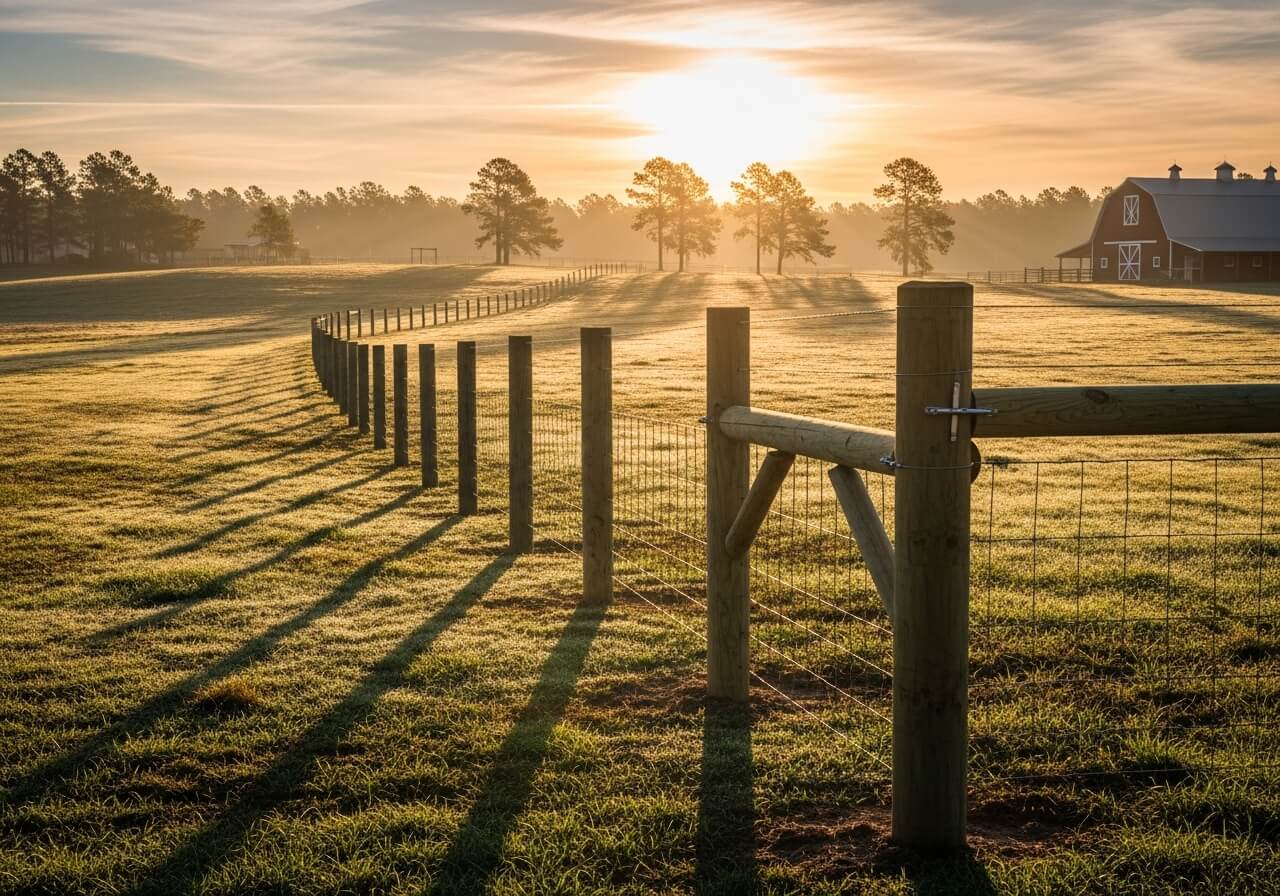
How to Build a High Tensile Fence Corner: A Pro Guide
Why a Strong Corner Brace is the Foundation of Your Fence
A high tensile fence is a system built on tension. Unlike other fences that rely on the strength of every post, a high tensile system pulls itself tight from anchor points at the corners and ends. Getting the high tensile fence corner right is not just important, it is the single most critical factor for a fence that will stand strong for decades.
The Physics of a High Tensile Fence
Imagine thousands of pounds of constant pressure pulling on a single point. That's what your corner assembly endures. Each wire is tensioned individually, and that combined force is transferred directly to your corner structures. If these anchors fail, the entire fence line sags and eventually collapses. This is why a properly engineered brace system isn't a suggestion; it's a necessity for any successful high tensile fence setup.
Consequences of a Weak Corner
We've seen it too many times: a corner post leaning after the first year, wires drooping, and a brand-new fence rendered useless. A weak corner leads to constant re-tensioning, repairs, and eventually, a complete and costly rebuild. In the sandy or loamy soils common throughout the Florida Panhandle, a poorly set corner post doesn't stand a chance. Investing in building it right the first time saves you money, time, and massive headaches down the road.
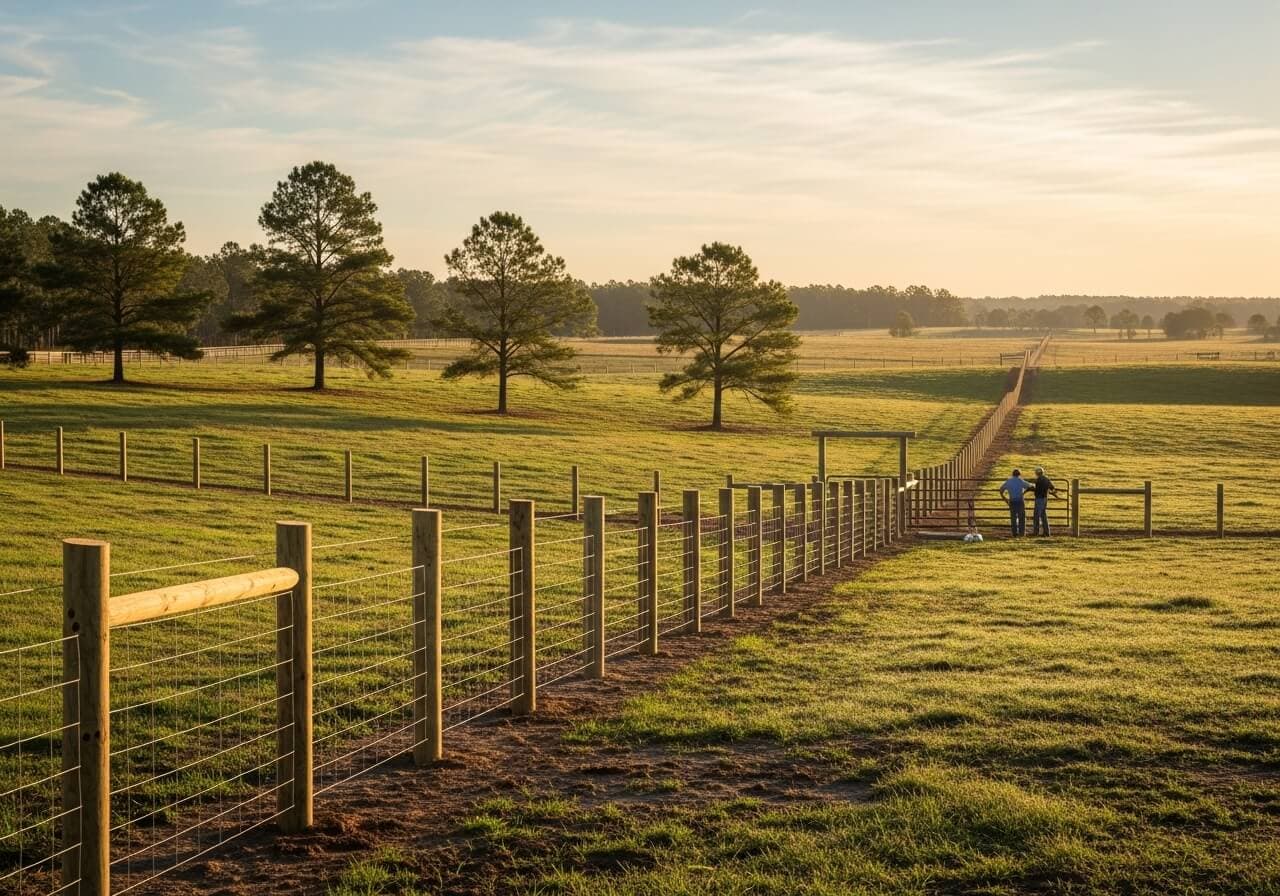
The H-Brace: The Gold Standard for Strength
For agricultural fencing, the H-brace assembly is the undisputed champion of strength and longevity. Available as a single or double H-brace, this structure effectively transfers the horizontal tension of the fence line into the ground. At Bomann Fencing, we build our high tensile fence corners with deeply set posts and extra-long braces to guarantee they can withstand the immense forces and the unique soil conditions of our region.
How to Build a Ranch-Tough High Tensile Fence Corner
Learning how to put up high tensile fence starts with mastering the corner. This step-by-step guide, which aligns with detailed tutorials from agricultural homesteaders Snowdrop Farm, 2025, walks you through the professional process for building a corner that will last a lifetime.
Step 1: Choosing the Right Materials
Your corner is only as strong as its weakest component. Using substandard materials is a guarantee for future failure. Here’s what you need for a bomb-proof corner assembly:
- Corner & Brace Posts: We use a minimum 6-inch diameter, 8-foot long corner post and brace posts treated to .60 CCA. This higher-grade treatment provides superior protection against rot and insects compared to the standard .40 CCA found at big-box stores.
- Brace Rail: A 4-inch diameter, 10-foot long wooden rail provides the horizontal support for the H-brace.
- Brace Wire & Pins: Use high-tensile, 12.5 gauge Class 3 galvanized wire for the brace. The Class 3 coating is essential for resisting rust in our humid, coastal climate.
Step 2: Setting Your Posts for Maximum Stability
The depth and stability of your posts are non-negotiable. This is where most DIY installations go wrong. In the sandy and mixed soils of South Alabama and the surrounding tri-state area, you must go deep.
- Dig Deep: Your corner post hole should be at least 42 to 48 inches deep. The brace post should be set to the same depth, approximately 8 to 10 feet from the corner post.
- Drive, Don't Dig: For unmatched stability, we use a professional-grade, skid-steer post driver. This machine pounds the post into undisturbed soil, creating a far tighter and more secure fit than simply backfilling a dug hole.
- Tamp Securely: If driving isn't an option, place the post in the hole and backfill in 6-inch increments, tamping down firmly with a tamping rod at each layer to ensure maximum compaction.
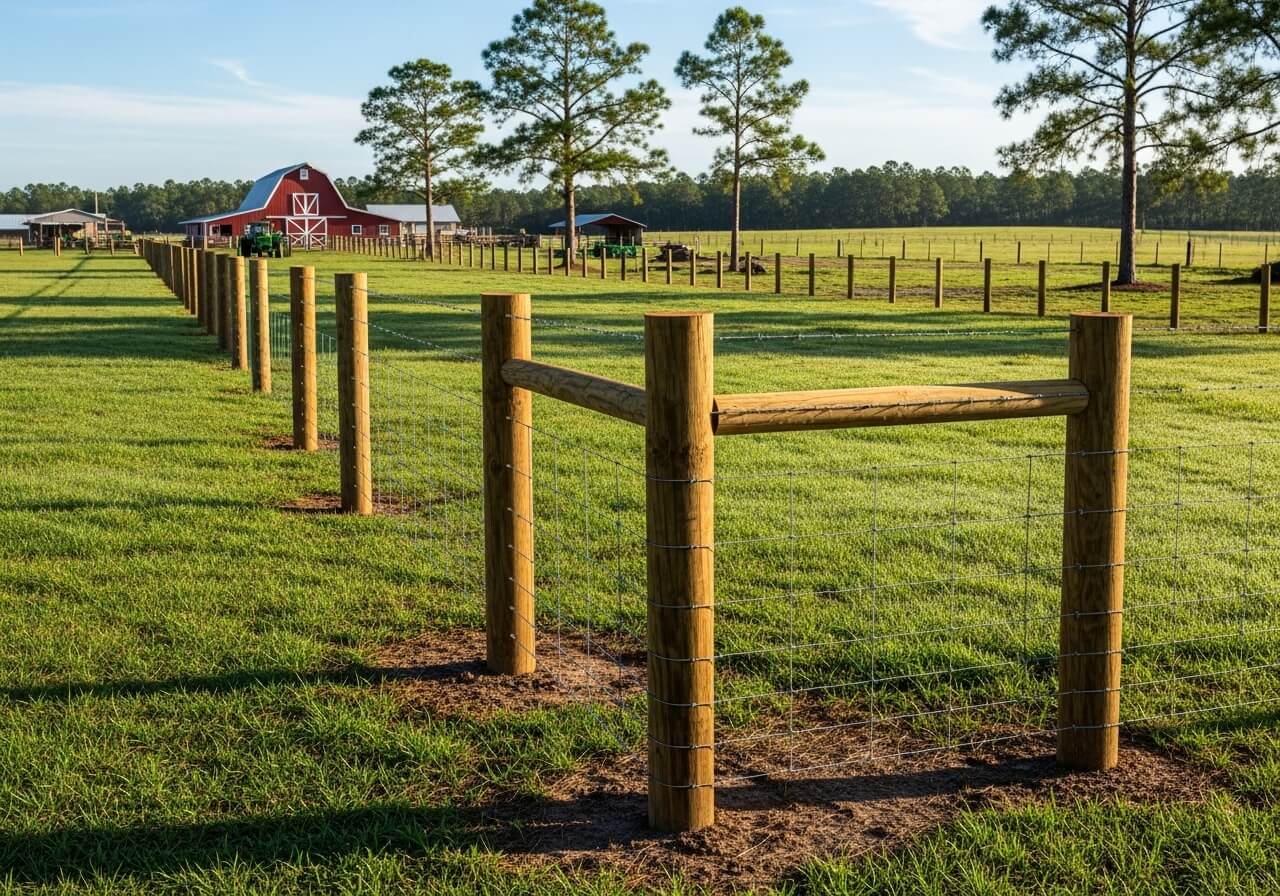
Step 3: Constructing the H-Brace and Tensioning the Brace Wire
With your posts solidly in the ground, it's time to build the brace.
- Install the Brace Rail: Cut the horizontal brace rail to fit snugly between the corner and brace posts, about 12 inches from the top of the posts. Secure it with galvanized spikes or specialty brace pins.
- Wrap the Brace Wire: Staple your 12.5 gauge brace wire diagonally. Start at the bottom of the corner post, wrap it around the brace post just above the horizontal rail, then bring it back to the bottom of the corner post. Repeat this to create a double strand.
- Tension the Wire: Insert a small piece of wood or a tensioning tool between the two strands of wire and twist. Continue twisting until the wire is banjo-string tight—it should make a low "hum" when you tap it. This tension is what prevents the top of the corner post from leaning.
When to Use a Double H-Brace
A single H-brace is sufficient for many applications, but a double H-brace (two H-braces in a row) is required for maximum strength in certain situations. We always recommend a double H-brace for long, straight fence lines exceeding 650 feet, for corners with major changes in direction (over 15-20 degrees), or in areas with particularly soft or challenging terrain.
Common Mistakes and Long-Term Maintenance
Need Help?
Get expert fencing advice and free quotes. Our team is ready to help with your project.
Available Mon-Fri, 8am-6pm EST
Building a fence correctly the first time saves you from costly repairs. Avoid these common pitfalls to ensure your investment is protected.
Top 3 Corner Construction Mistakes to Avoid
- Posts Not Set Deep Enough: This is the number one cause of failure. A 3-foot hole is not enough for a high tensile fence corner, especially in our regional soils.
- Inadequate Brace Materials: Using a T-post as a brace post or using untreated wood will lead to a collapsed corner, often within a few years.
- Improper Brace Wire Tension: A loose brace wire provides no support. It must be banjo-string tight to effectively transfer the load into the ground.
Maintaining Your High Tensile Fence Corner
A well-built fence is a low-maintenance fence. Once installed, your corners should require very little attention. We recommend a simple annual check-up, especially for properties in the varied terrain of South Georgia, a best practice supported by university extension programs CAES Field Report, 2025.
- Walk your fence line and visually inspect the corners for any signs of leaning.
- Tap the brace wire. If it feels loose or has lost its "hum," give it a few more twists to re-tighten.
- Check your insulators to ensure they are intact and not cracked or worn.
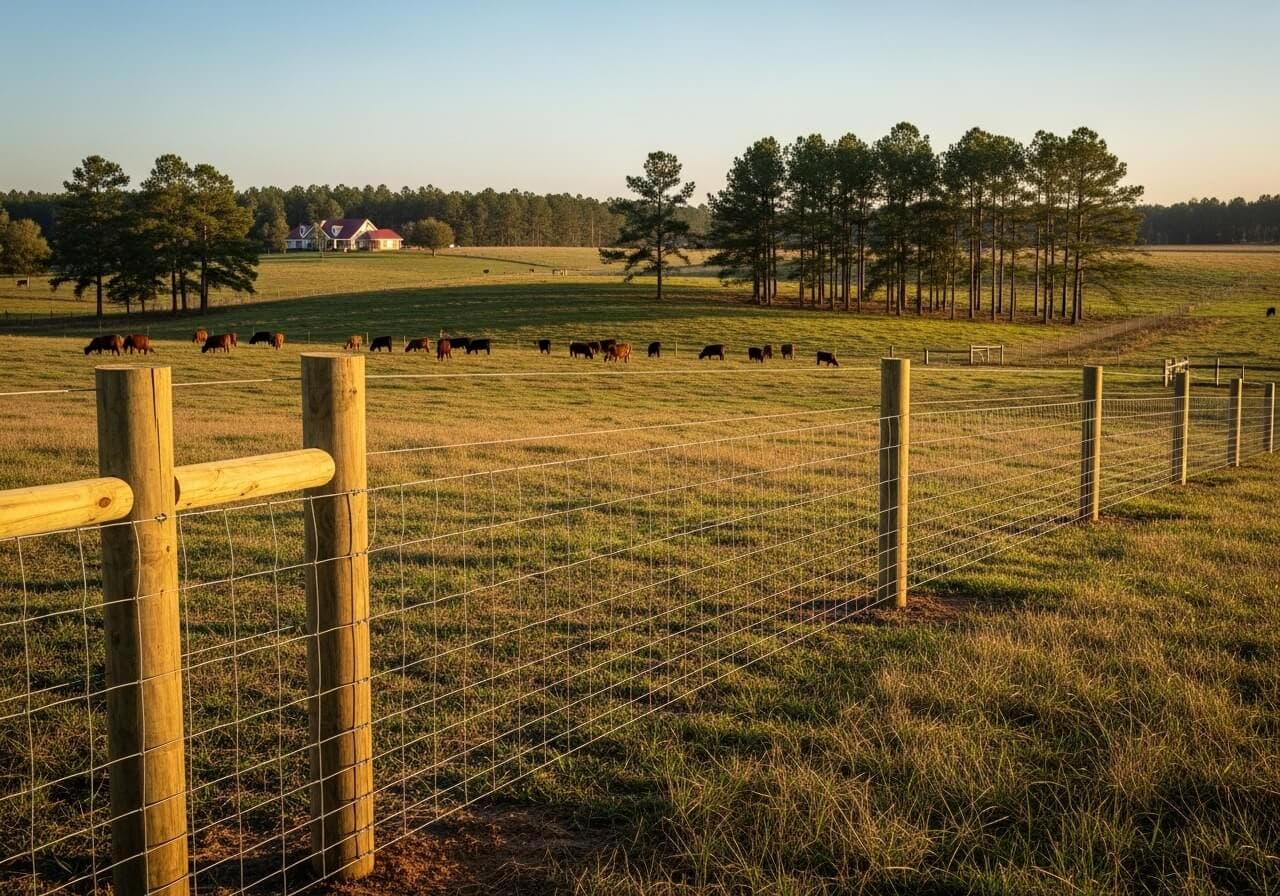
Frequently Asked Questions About High Tensile Corners
How deep should a high tensile fence corner post be in Florida's sandy soil?
In the sandy soils common to Florida, a corner post must be set deeper than in heavy clay. We recommend a minimum depth of 42 inches, but 48 inches (4 feet) is ideal for a high tensile fence corner to ensure it remains perfectly stable under load.
What's the difference between a single H-brace and a double H-brace for a high tensile fence?
A single H-brace consists of one corner post, one brace post, and a connecting rail. A double H-brace adds a second brace post and rail in line with the first. It is used for extra-long fence runs (over 650 feet) or significant changes in direction to provide additional strength and support.
Why can't I use T-posts for a high tensile fence corner brace?
T-posts lack the structural integrity and ground-holding power to withstand the thousands of pounds of tension from a high tensile system. They will bend, pull out of the ground, and cause a complete failure of your high tensile fence corners. They are only suitable for line posts between properly braced corners.
How much does a professionally installed high tensile fence corner cost in the tri-state area?
The cost varies based on materials (wood vs. steel), the need for a single or double H-brace, and site conditions, with national cost averages offering a general baseline HomeGuide, 2025. However, investing in a professionally built corner with high-quality materials is far more cost-effective over the long run than paying to repair or replace a failed one. Contact us for a precise, free estimate based on your specific needs.
A rock-solid high tensile fence corner is the heart of a reliable agricultural fencing system. By using superior materials, professional installation techniques like deep-set posts, and a properly constructed H-brace, you can build a fence that secures your property and protects your livestock for generations.
For a ranch-tough fence built right the first time, trust the agricultural fencing experts at Bomann Fencing. Call us today for a free, no-obligation estimate on your project in the Florida Panhandle, South Alabama, or South Georgia.
Share this article
Related Posts
Need Help?
Get expert fencing advice and free quotes. Our team is ready to help with your project.
Available Mon-Fri, 8am-6pm EST
Related Posts
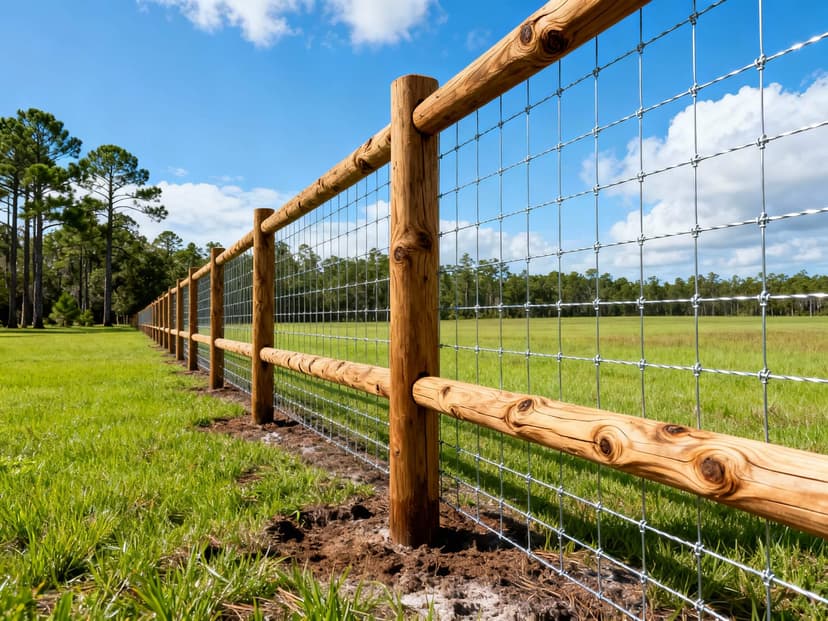
Fixed Knot Deer Fence: A 40-Year Solution for Your Farm
Why Fixed Knot is the Gold Standard for Wildlife Control You see the damage every morning. Deer and feral hogs relentles...
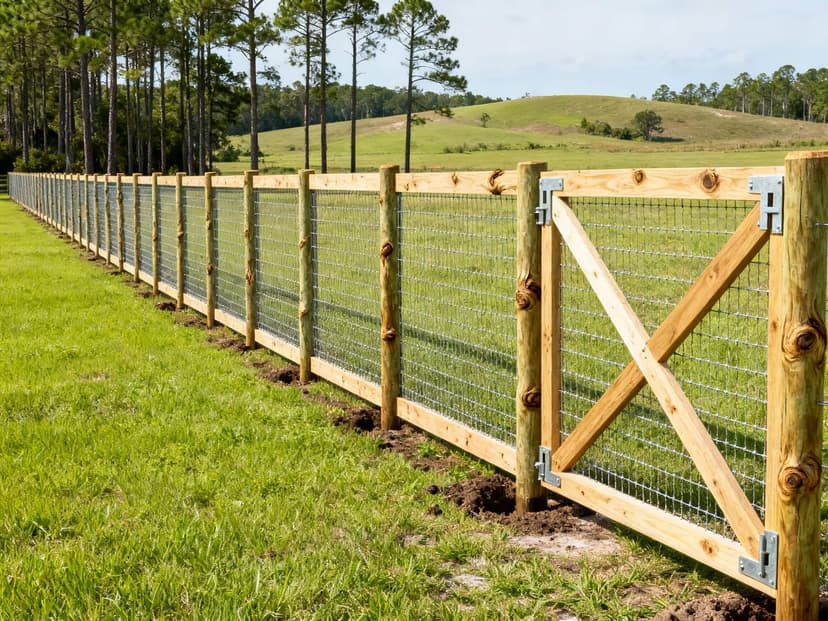
8 Ft Deer Fence Guide: Materials & Pro Installation
Planning Your Investment: Materials, Layout, and an 8 Ft Deer Fence Protecting your property, crops, or livestock from d...
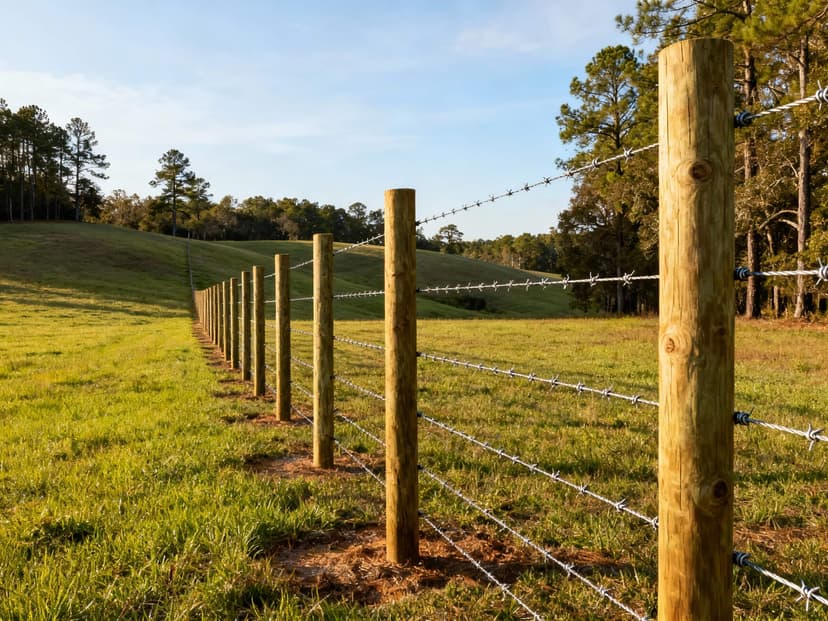
Game Fence Guide: Choosing the Best for CWD & Asset Protection
Why a High-Security Game Fence is a Critical Investment For landowners with large properties, a high-security game fence...
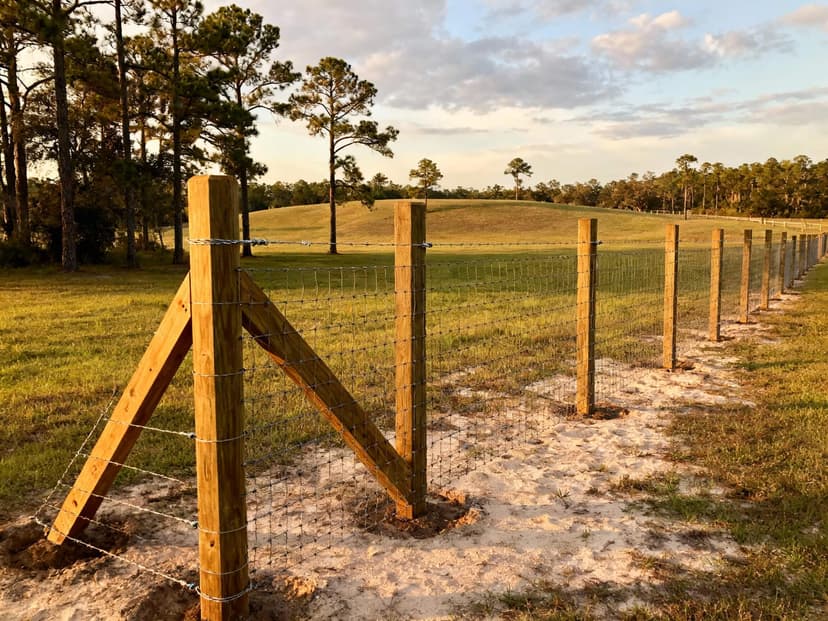
5 Goat Fence Ideas to Keep Your Herd Safe in the Southeast
Top Goat Fence Ideas for Southeastern Farms Your goats are clever, curious, and natural escape artists. Here in the Sout...
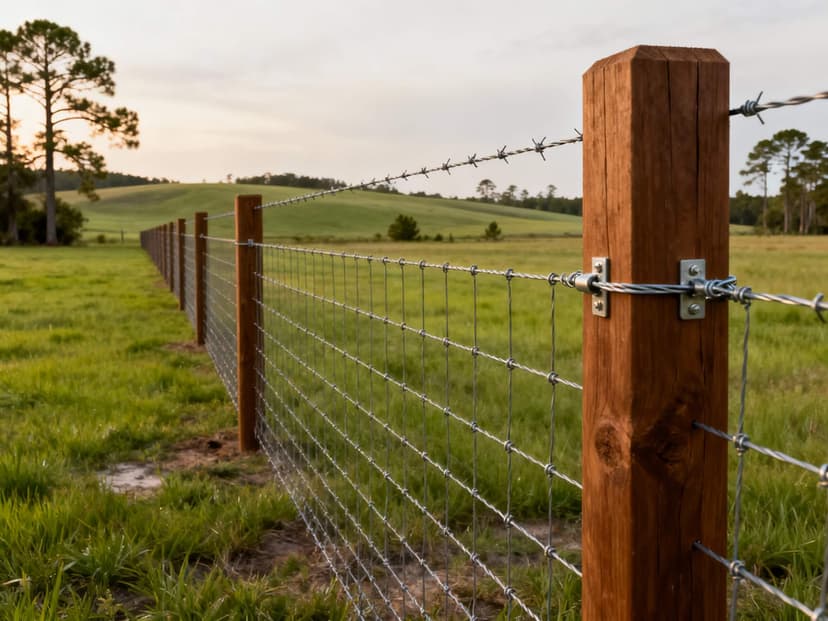
A Farmer's Guide to Stock Fence Wire in the Southeast
Why a Quality Wire Coating is Non-Negotiable in the Southeast Living and working in the Southeast means dealing with a u...






